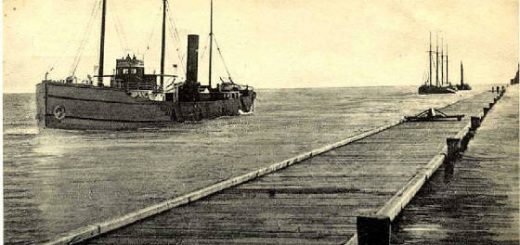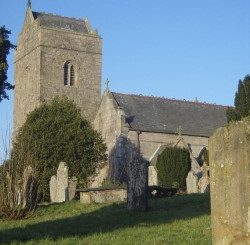St Gwynog’s Church, Aberhafesp
St Gwynog’s Church in Aberhafesp currently dates from 1857 when the earlier church was rebuilt. Though the first parish registers date from 1578, there are records of a church here in Aberhafesp dating back to 1254. The church is dedicated to the 6th century Gwynog (Born 511 – Died 580), the son of Gildas. The following account by Elias Owen in his 1887 ‘Welsh folk-lore: a collection of the folk-tales and legends of North Wales’ describes how the name of someone about to die was revealed by a spirit at the church on Nos G’lan Geua’(All Hallows Eve). Given the date of writing this could feasibly be either from the new church built in 1857 or its predecessor.
 ’Mr. Breeze, late governor of the Union House at Caersws, told me that he had heard of a person going to Aberhafesp Church porch, on All-Hallows’ Eve, to ascertain whether there would be a death in that parish in the coming year.
’Mr. Breeze, late governor of the Union House at Caersws, told me that he had heard of a person going to Aberhafesp Church porch, on All-Hallows’ Eve, to ascertain whether there would be a death in that parish in the coming year.
A couple of men, one of whom, I believe, Mr. Breeze said was his relative, went to the church porch before twelve o’clock at night, and sat there a length of time without hearing any sound in the church; but about the midnight hour, one of the men distinctly heard the name of his companion uttered by a voice within the church. He was greatly terrified, and, addressing his friend, he found that he had fallen asleep, and that, therefore, fortunately he had not heard the ominous voice. Awaking his companion, he said—“Let’s go away, it’s no use waiting here any longer.”
In the course of a few weeks, there was a funeral from the opposite parish of Penstrowed, and the departed was to be buried in Aberhafesp Church yard. The River Severn runs between these two parishes, and there is no bridge nearer than that which spans the river at Caersws, and to take the funeral that way would mean a journey of more than five miles. It was determined, therefore, to ford the river opposite Aberhafesp Church. The person who had fallen asleep in the porch volunteered to carry the coffin over the river, and it was placed on the saddle in front of this person, who, to save it from falling, was obliged to grasp it with both arms; and, as the deceased had died of an infectious fever, the coffin bearer was stricken, and within a week he too was a dead man, and he was the first parishioner, as foretold by the Spirit, who died in the parish of Aberhafesp that year.’























Recent Comments